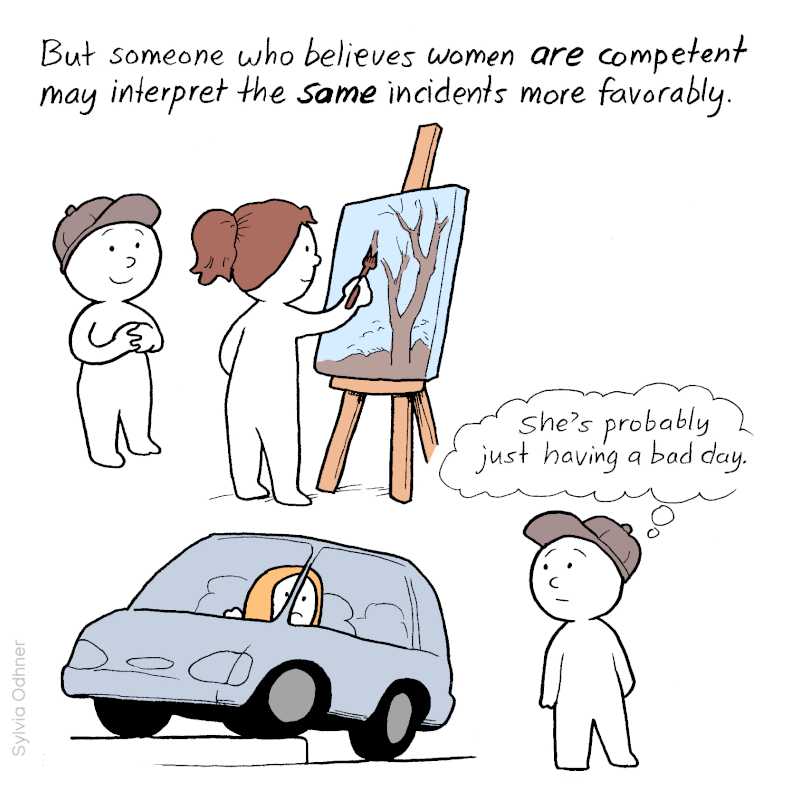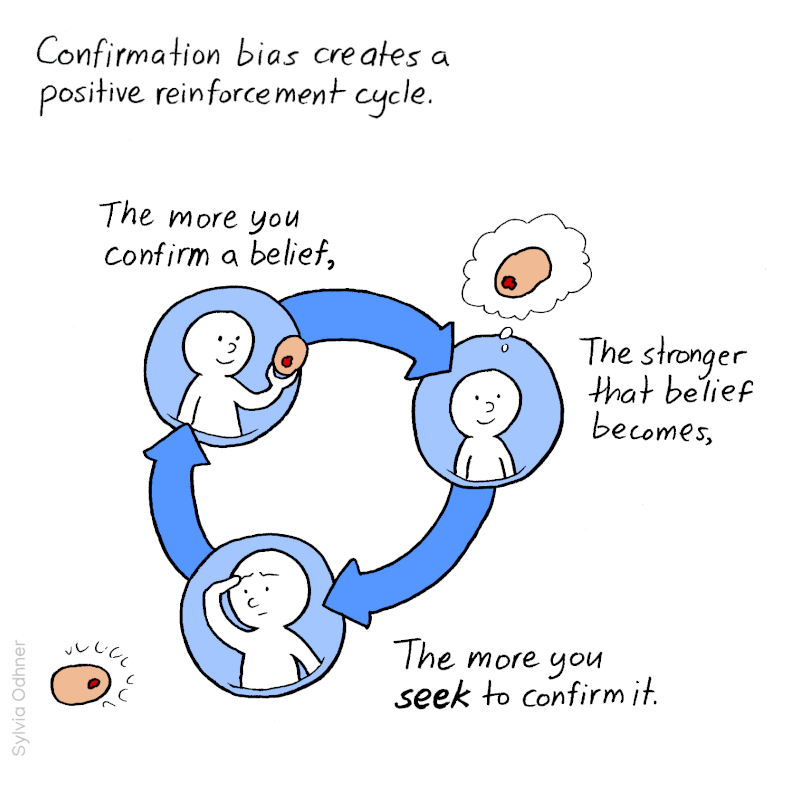Confirmation Bias: How We Convince Ourselves We're Right
January 23rd, 2022









Comic Text
Let me tell you about confirmation bias.
Person A, holding a Jelly donut: Aha, see? More proof that donuts are jelly-filled!
Person B: What about all the other donuts?
(Person B gestures towards a box with more donuts) Person A: Huh? What other donuts?
Narrator: We have a tendency to seek out and interpret information in ways that confirm what we already believe, regardless of how true our beliefs are. Let’s say you think women are incompetent. Every time you see a woman messing something up, it’s likely to cement that idea into your mind.
(A woman drives her car onto the curb, person C watches and cringes)
Narrator: Whereas if you see a woman doing something well, you may put a negative interpretation on it.
(a woman is painting a nice picture)
Person C: (thinking) Show off.
Narrator: And you may interpret both incidents as evidence that reinforces your negative view of women. But someone who believes women are competent may interpret the same incidents more favorably.
(Person D admires the woman painting the picture, and sees the woman driving her car on the curb)
Person D: (thinking) She’s probably just having a bad day.
Narrator: If you look for evidence to support a belief you have, it’s pretty easy to find some, especially if you’re selectively choosing the bits of information that already fit with your worldview.
(Person a pointing at a jelly donut in a donut shop)
Narrator: So if you keep noticing things that confirm what you believe, it doesn’t necessarily mean you’re right.
(person C sees a woman dropping her phone)
There are a lot of things you might not notice because they don’t match the patterns you’re looking FOR.
(person C looks away while other people make mistakes)
Confirmation bias creates a positive reinforcement cycle. The more you confirm a belief, the stronger that belief becomes, the more you seek to confirm it. This cycle entrenches is in our beliefs and pushes us into more extreme, one-sided viewpoints.
(Person A looks at a website called The Jelly Donut Conspiracy)
Person A: Whoa, it all makes sense now!
Narrator: But if we continually question our assumptions, seek out information that challenges our beliefs, and admit that we might be wrong,
(Person A looks inquisitively at a Jelly donut, then looks at a plain donut, then breaks apart the plain donut)
We can protect ourselves from the influence of confirmation bias.
(Person A furiously tries to stuff plain donuts with jelly)
Person A: My whole life can’t be a lie!
Narrator: At least… somewhat.
Info Comics
Confirmation Bias: How We Convince Ourselves We're RightSuperfoods: Are They Really Super at All?
Does the Power of Belief Work?
How Do You Change Someone's Mind?
Why Can't We Build Better Towns?
Trust
Comic Series
A Human-Scaled JourneyInfo Comics
Oops Sorry
Misc. Short Comics
Drew the Centaur
Don't Get Any Ideas
Averting the Flame Wars
Think Before You Think
(see more)
